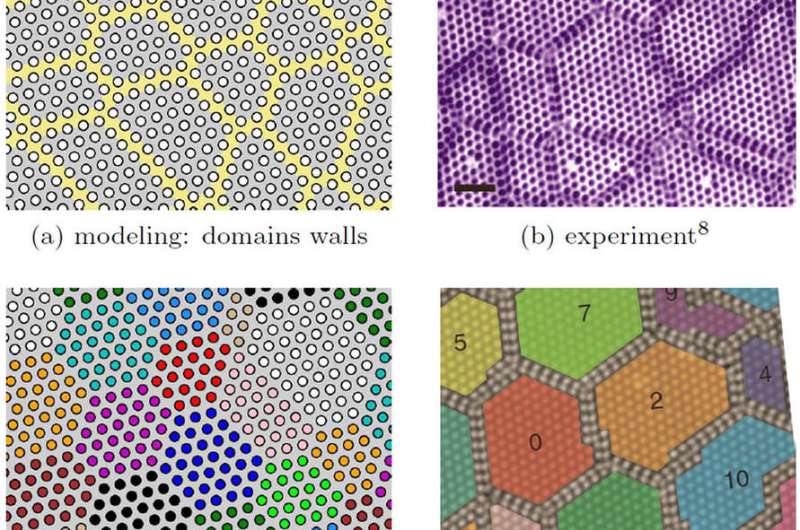Similar charges are attracted to each other

NUST MISIS scientists have discovered how the latent state formation in layered tantalum disulfide develops. The discovery has future applications in computer memory.
Professor Petr Karpov and Serguei Brazovskii, both researchers at NUST MISIS, have developed a theory explaining the mechanism of the latent state formation in layered tantalum disulfide, one of the most promising materials for modern microelectronics. The latent state of matter was discovered by Serguei Brazovskii with a group of experimenters from Slovenia in 2014. In that experiment, the tantalum disulfide sample, which was less than 100 nanometers, was illuminated by an ultrashort laser. Via pulses in the irradiated area, the sample could be switched to a conductor of dielectrics and back to its original state. The switching occurred in just one picosecond —a far quicker rate than in the "fastest" materials used as storage mediums in modern computers. That condition persisted after exposure. Accordingly, the material has become a potential candidate for the basis of the next generation of information data mediums.
Professor Petr Karpov, engineer at the NUST MISIS Department for Theoretical Physics and Quantum Technologies, said "The boom in the study of layered tantalum disulfide happened after our colleagues from Slovenia discovered the latent state, unattainable in conventional (thermodynamic) phase transitions. However, most of these works were experimental, and the theory lagged behind. What were the mechanisms of the latent state formation? Its nature remained unclear. Why doesn't the system return to its original state, continuing to remain in modified form indefinitely? In this article, we tried to find the theoretical justification of the occurring processes."
Tantalum disulfide belongs to a special group of conductor materials in which so-called charge-density waves form. This means that in addition to the natural peaks of electron density caused by the presence of an atom, there is also another periodicity that is several times greater than the distance between the adjacent atoms of the crystal lattice. In this case, the degree of that periodicity is the root of 13, so there is quite a large difference.
Picture A shows a layer of tantalum atoms. The period between the "superpeaks" is marked with a red arrow. The state of the sites in the tantalum disulfide layer differ from each other in the fact that the maximum electron density is centered on tantalum atoms. The red ones show one state, while the blue and white ones show other states.
The work of NUST MISIS scientists consisted of constructing and studying a universal theoretical model that could describe the most important property of the newly discovered state—the formation and transformation of nano-structural mosaics (pic. b). Some of the metal atoms fly out of the lattice after the processing of electrical impulses in the sample of layered tantalum disulfide, and that causes defects—charged vacancies in the electronic crystal.
However, instead of keeping a maximum distance from each other, the charges are smeared along the linear chains of tantalum atoms, forming boundaries of zones with different states of tantalum atoms. These domains then essentially chain up, connected to a global network. Manipulating these nanosets is the reason for the switching and memory effects observed in the material.
"We tried to find out why similar charges in such a structure do not repel, but, in fact, are attracted to each other. It turned out that this process is energetically more profitable than the maximum removal of positive charges from each other because the formation of fractional charged domain walls minimizes the charge of the constituent wall of atoms, which is why the domain system becomes more stable. This is completely confirmed by the experiment, and the whole crystal can be taken to such a state with a domain mosaic and globules dividing the walls," added Petr Karpov.
Thanks to the development of this theory, it is possible to confirm that the domain state of tantalum disulfide can be used for long-term storage and super-fast operation of information. An article with the research results was published in Scientific Reports.
More information: Petr Karpov et al, Modeling of networks and globules of charged domain walls observed in pump and pulse induced states, Scientific Reports (2018). DOI: 10.1038/s41598-018-22308-7
Journal information: Scientific Reports
Provided by National University of Science and Technology MISIS




















